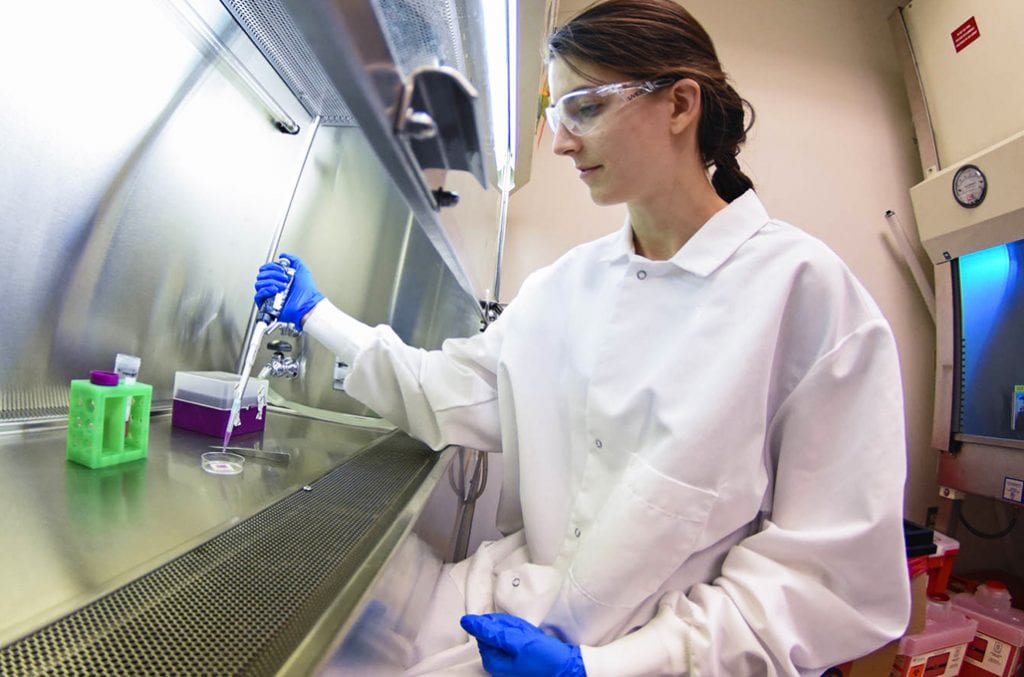
Research Projects
Projects from the 2018 REU site are listed below to provide an idea of the type of research that is carried out at WPI. This page will be updated when the 2019 projects have been finalized. Applicants should note that after their acceptance to the site, they will be asked to rank their interest in available projects and matched with one that suits their interests.
Modeling materials for solar energy
Advisor: Aaron Deskins, Chemical Engineering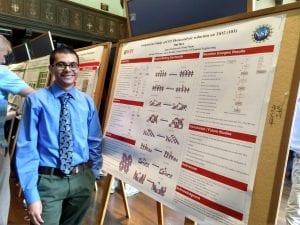
Modern society relies on burning fossil fuels for energy, which unfortunately produces toxic pollutants and greenhouse gases. More sustainable energy sources are needed. Sunlight is plentiful, but cheap efficient materials that can absorb and utilize solar energy limit the adoption of solar energy. Particularly, the production of “solar fuels”, where solar energy is used to drive chemical reactions using catalyst materials, could be a breakthrough technology to enable clean energy.
This project will utilize modern computational methods to understand, characterize, and predict how catalyst materials could enable the CO2 reduction reaction. This reaction converts CO2, a harmful greenhouse gas, into useful fuels such as methane or methanol. For instance, just as Google uses state-of-the art computational resources to predict the best search hits, computational methods can be used to predict which materials may be good catalysts for CO2 reduction or how such catalysts work. This project will advance clean solar fuel production and help discover new important materials. No programming will be involved in this project and students will be taught to use all relevent tools.
Treating Algal-Laden Drinking Waters with Ferrate
Advisor: Jeanine Plummer, Civil and Environmental Engineering
The production of algae in surface waters is a major threat to water quality, aquatic ecosystems, and public health, especially when these surface waters serve as sources of municipal drinking water. Of particular interest is cyanobacteria (blue-green algae) which can impart toxins into the water, such as microcystin-LR. These toxins are demonstrated to promote tumor production and are acutely toxic. A well-known example of the impact of these harmful algal blooms (HABs) on drinking water systems occurred in Toledo, Ohio. There, a major HAB led to a do-not-drink order from the public water utility in the summer of 2014. Water utilities have several options for the treatment of source water HABs; however, many of these require significant capital investment. Ferrate (Fe(VI)) is emerging as an alternative oxidant to ozone and permanganate for control of algae due to several major advantages including: no direct production of hazardous byproducts, a strong oxidation potential, and the in situ formation of Fe(III) particles which benefit downstream treatment processes. The central hypothesis of this research is that ferrate is advantageous for HAB treatment, as the oxidizing potential of ferrate can be adjusted as a function of pH, thus minimizing cell lysing while maximizing benefits to coagulation and clarification. This project will involve culturing of HABs for use in experiments; designing the bench-scale testing system; conducting preliminary oxidation experiments; and developing protocols for measuring water quality impacts – such as organic matter concentrations, flow cytometry for cell lysing, and disinfection byproduct production.
Net Zero Neighborhood: A Nexus of Food, Energy, and Water for Smart Cities
Advisor: Soroush Farzin-Moghadam, Civil & Environmental Engineering
Residential and commercial buildings account for 20% of the delivered energy consumed worldwide. One of many approaches to fulfill this ongoing demand is designing and constructing Net Zero-Energy Buildings. Success and failure in achieving Net Zero-Energy building highly depends on the precise definition of the net-zero goal, whether it is net-zero energy cost, source energy, site energy, or even net-zero emissions. To achieve the TRUE net-zero goal (which we believe is net zero emissions), buildings should be considered as an integrated system. Researchers have been investigating food, energy, and water (FEW) systems for a long time; however, these aspects have been considered as separate entities. For successful implementation, all systems need to be considered simultaneously in a holistic approach.
In this research, we investigate the possibility of achieving TRUE net zero emissions by developing and examining the idea of Net Zero Neighborhood (NZN). The NZN approach rehabilitates an existing urban district and integrates different FEW systems into a holistic model to achieve the Net Zero goal and successfully perform the nexus of FEW for a neighborhood. This project improve our understanding of the Food-Energy-Water systems within a Net Zero Neighborhood by developing the quantitative and predictive model. By incorporating different processes occurring simultaneously in a FEW system and how they can be utilized efficiently in different design/planning scenarios (such as a physical process which represent the built infrastructure) with cyber components (including sensing, computation, and visualization), the outcomes of the interface can support design making process, leading to an optimized solution.
Moisture damage in asphalt pavements
Advisor: Rajib Mallick, Civil & Environmental Engineering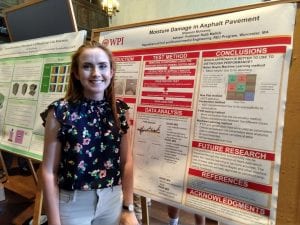
Water or moisture damage in Hot Mix Asphalt (HMA) pavement is one of the primary causes of premature pavement failures all over the world. It results in pavement distresses such as cracking, rutting, raveling and stripping and ultimately leads to reduced life span of the pavement and increased rehabilitation cost. Moisture damage in asphalt pavements is a complex phenomenon involving many factors. There are two fundamental failure mechanisms by which moisture can cause damage to an asphalt mixture: adhesion failure, which is loss of adhesion between asphalt mastic and aggregate surface and cohesion failure, which is loss of cohesion within the asphalt mastic itself. These mechanisms in turn depend on number of factors such as aggregate minerology, aggregate surface texture, asphalt binder chemistry and chemical interactions between asphalt binder and aggregate etc. At present, pavement industry is in need for a reliable laboratory test procedure to identify good and poor performing asphalt mixtures in the design phase before construction.
The objective of this research project is to develop a framework to identify moisture susceptible mixes during the design phase. The REU student will compact asphalt samples and conduct volumetric analysis such as determining the bulk density and air voids, and perform mechanical tests such as Ultrasonic Pulse Velocity (UPV) test, Indirect Tension Strength (ITS) test, Semi-Circular Bend (SCB) test. The student will also operate the Moisture Induced Stress Tester (MiST) equipment and conduct image analysis. The student will perform all the above work after undergoing the relevant initial laboratory safety training.
Removal of emerging contaminants from subsurface wastewater discharges
Advisor: Paul Mathisen, Civil & Environmental Engineering
The wide use and the incomplete metabolism of antibiotics, along with the poor removal efficiency of current treatment systems, results in the introduction of large quantities of antibiotics to the environment through the discharge of treated and untreated wastewater. If not treated or attenuated near the source of discharge, the antibiotics can be distributed widely in the environment. Among the various entry routes, discharges from on-site disposal systems are of particular interest due to the wide use of these systems. The complex nature of subsurface transport downstream of these systems adds difficulties to the removal of antibiotics from subsurface discharges.
Sulfamethoxazole (SMX), a common sulfonamide antibiotic, was selected as a model compound due to its presence in the environment and its resistance to remediation and natural attenuation. Previous study suggested that soil amendment with biochar, a green and cost effective adsorbent, has good adsorptive capacity for SMX. Column studies also showed over 90% elimination of SMX due to adsorption and biodegradation. To understand the transport and transformation of SMX in the subsurface, it is important to assess the contribution of the adsorptive process to the high removal efficient of SMX in the column. This project is designed to study the adsorptive process of SMX in soil columns with different biochar amendments by inhibiting the bacterial activity.
In this project, you’ll have the opportunity to work on column assembly and operation, sample collection and test, and data analysis. The water analysis techniques that you’ll learn include pH, LC-MS, ICS for anions and etc. You may also have the opportunity to learn the data modeling using computation software.
Material and processing considerations for material extrusion additive manufacturing
Advisor: Amy Peterson, Chemical Engineering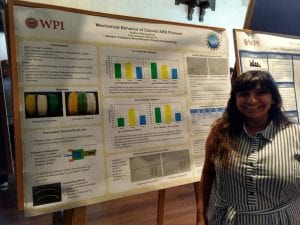
Additive manufacturing (AM) offers the potential to achieve complex geometries with minimal waste. In order to deliver on this potential, however, AM processes must be qualified to ensure that they can consistently deliver a product at certain specifications. Currently, AM processes are not qualified, necessitating individual print qualification in the form of additional test bars and sacrificial full parts for mechanical testing. This is a huge hurdle for wider adoption of AM. Material extrusion (MatEx) is a complex process, with numerous process inputs, material considerations, and environmental conditions that may affect part structure, properties, and performance. Material-processing-structure-property relationships in MatEx are complex, non-linear, and poorly understood. Therefore, investigation of these relationships is well-suited to a material informatics approach in which substantial amounts of metadata and performance data are input to data mining software capable of identifying relationships within multivariate datasets. This project will include thermal analysis of base materials, printing of MatEx structures, characterization of mechanical properties, evaluation of irreversible thermal strain upon annealing, and microscopy, in addition to an introduction to collecting high pedigree data sets and principal component analysis.
Wiring metal Sulfides to Silicon for Tandem Junction Solar Cells with Soft, Covalently Attached Organic Monolayers
Advisor: Ronald Grimm, Chemistry and Biochemistry
Tandem-junction solar cells enable more efficient solar-to-electricity energy conversion than single-junction materials due to their ability to absorb a broader range of solar spectral wavelengths with less energy wasted as heat. However, few methods exist to inexpensively connect two different solar-energy absorbing materials so as to enable efficient carrier conduction and minimal parasitic light absorption with minimal deleterious surface states. Metal sulfides have emerged as compelling absorber materials to pair with silicon for a tandem-junction cell, however few studies have established how to connect these materials together.
The study herein will explore the viability perylene-based monolayers as the connecting material between a metal sulfide and a substrate. Experiments will utilize existing methods to graft perylene tetracarboxylic dianhydride (PTCDA) molecules to a substrate and explore methods to convert terminal anhydride oxygen atoms to sulfur atoms as the resulting C=S thione chemical species chemically resemble the sulfur terminations of 2-D layered metal sulfides. The student will work side-by-side a graduate student mentor and the PI to explore sulfurization synthesis strategies that achieve maximum oxygen-to-sulfur conversion while using ultrahigh vacuum instrumentation to quantify sulfur conversion and surface electronic properties.
Catalytic Hydrothermal Liquefaction of Food Waste to Renewable Fuels and Chemicals
Advisor: Michael Timko, Chemical Engineering
This project will focus on the use of solid catalysts for the conversion of food waste to bio-oil. Food waste is a possible, energy dense alternative to lignocellulosic biomass, with the potential to be converted into drop-in transportation fuels with thermochemical properties comparable to petroleum-derived fuels. Utilizing food residues also helps divert material from landfills and reduce life-cycle greenhouse gas emissions caused by the biodegradation of organic waste. Thermochemical processing via hydrothermal liquefaction (HTL) is an attractive process for food wastes, which is capable of converting a broad range of wet organic solids at moderate temperatures and high pressures without the need for a costly biomass drying step. The addition of catalysts to this process is desirable to enhance the rate and selectivity of valuable products.
Initially, we will synthesize catalysts consisting of metals supported on oxides. A variety of wet chemical and thermal techniques will be used to prepare the catalysts. Following synthesis, characterization of the catalysts properties will include surface area, metal dispersion, crystallinity and acid/base site determination. Characterization techniques will include physisorption, hydrogen chemisorption, X-ray diffraction, Raman and infrared spectroscopy. The catalysts will be tested for food waste upgrading using a high pressure/temperature catalytic HTL reactor.
All lab workers at required to take WPI’s lab safety and hazardous waste training seminar. In addition, specific lab safety and chemical/materials handling will be taught in the lab.
Structure and properties of plant leaf
Advisors: Steven Van Dessel, Civil & Environmental Engineering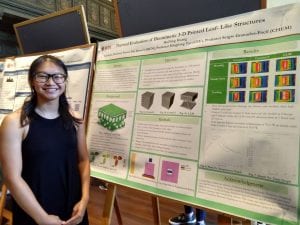
Mingjiang Tao, Civil & Environmental Engineering
Plants use various mechanisms to regulate their temperature, including (i) stomata to regulate temperature through evaporative cooling, (ii) wax cuticle layers to control radiation heat transfer, (iii) silica bodies to control IR radiation heat gain, (iv) multi-scale surface topologies to control reflection or absorption of light, or (v) hydrophobicity gradients to affect evaporative heat loss and wetting. Plant leaf are also hierarchically structured cellular systems that show high cell packing density on the sun-facing side and reduced cell-density (and increased air-permeability) deeper into the leaf structure.
The purpose of this project is to learn more about the underlying thermal transport mechanisms that regulate temperature in plant leaf. To accomplish that, we will first learn more about the three dimensional structure of different plant leaf systems. As part of this project, students will:
1) Investigate the 3D architecture of different plant leaf systems using various techniques
2) Develop 3D CAD models of plant leaf systems
3) Use additive manufacturing techniques to print scale models of plant leaf
The outcome of this work will help us to develop models to investigate the thermal properties of leaf systems, eventually allowing us to gain new insights on heat transfer mechanisms in plant leaf. We anticipate that the principles discovered through such work can also be used in various engineering application, such as for the design of smart materials for buildings thermal control.
A Synthetic Biology Route to Novel Underwater Adhesives
Advisors: Eric Young, Chemical Engineering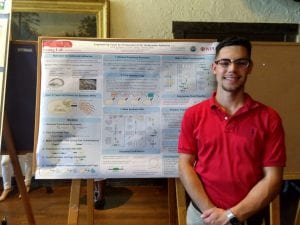
Amy Peterson, Chemical Engineering
Underwater adhesives are a “holy grail” for materials science, with applications spanning a wide range of industries including construction, shipping, and defense. Nature has excellent examples of complex coacervate analogues capable of underwater adhesion. Animals like mussels and barnacles secrete protein complexes that are capable of strong adhesion to a wide range of surface chemistries and topographies both underwater and in the air, inspiring biomimetic research. Yet, biomimetic materials science has been unable to replicate the superior properties of these biological materials.
The mussel plaque, which anchors mussels to a substrate through the byssal thread, consists of specific combinations of proteins. In nature, mussels attach themselves to rocks by extruding a byssal thread and plaque through a tongue-like organ called the mussel foot. The plaque is in direct contact with the substrate and consists primarily of mussel foot proteins (Mfps) 2, 3f, 3s, 5, and 6.1 These plaque proteins are cationic and contain substantial amounts of the amino acid Dopa, which contains a catechol side chain that is proposed to be essential to adhesion. The byssal thread also contains catechol groups, and metal ion coordination with catechols is generally accepted to be the source of the self-healing abilities of mussel byssal threads, which are capable of recovering their tensile properties after yield. This complex of heterogeneous proteins has yet to be replicated in any synthetic system, thus the relationship between protein composition and material properties is unknown.
In the post-genomic era, genome sequencing has enabled discovery of the genes encoding these Mfps, and recombinant DNA technology has enabled expression of the individual genes for specific Mfps. The objective of this proposal is to successfully create and characterize a synthetic mussel foot adhesive in yeast. This would answer many long-standing questions in the field and drive synthesis of novel materials. The project will include mussel foot refactoring in a yeast system and characterization of synthetic Mfp materials. The adhesive strength of Mfp mixtures will be measured on a range of model substrates typically used to characterize mussel-inspired/derived adhesives, such as titanium, glass, rock, and PTFE.